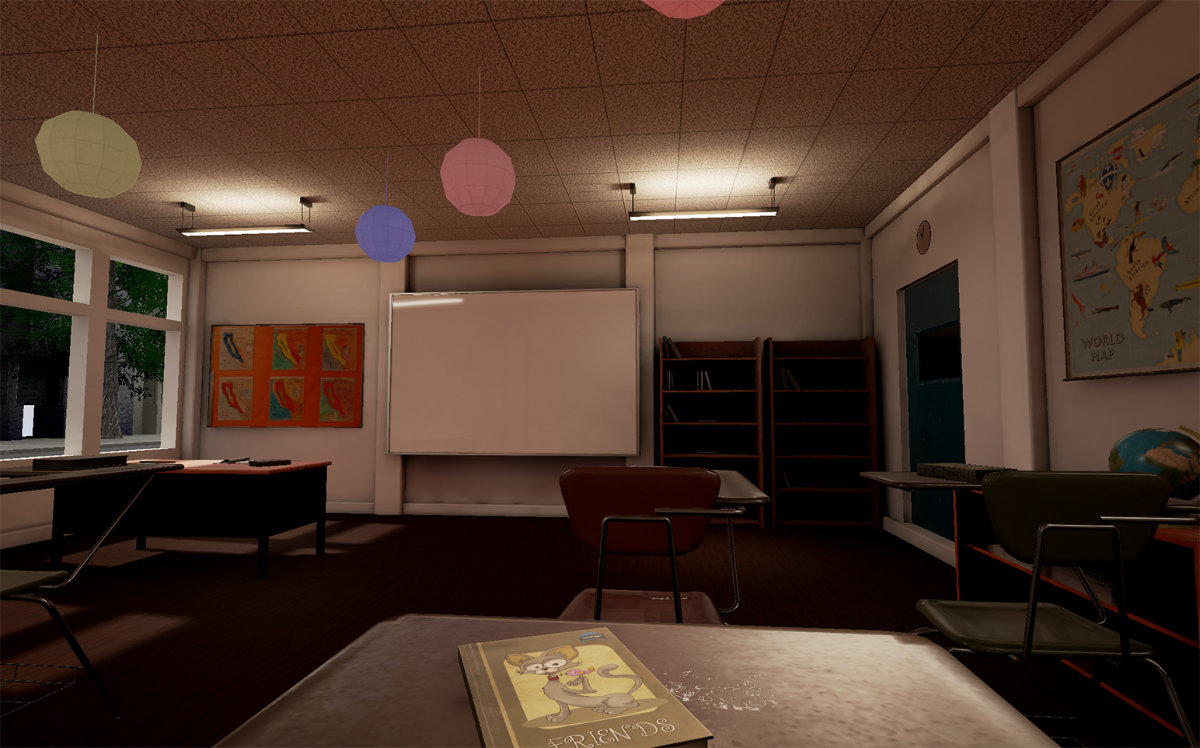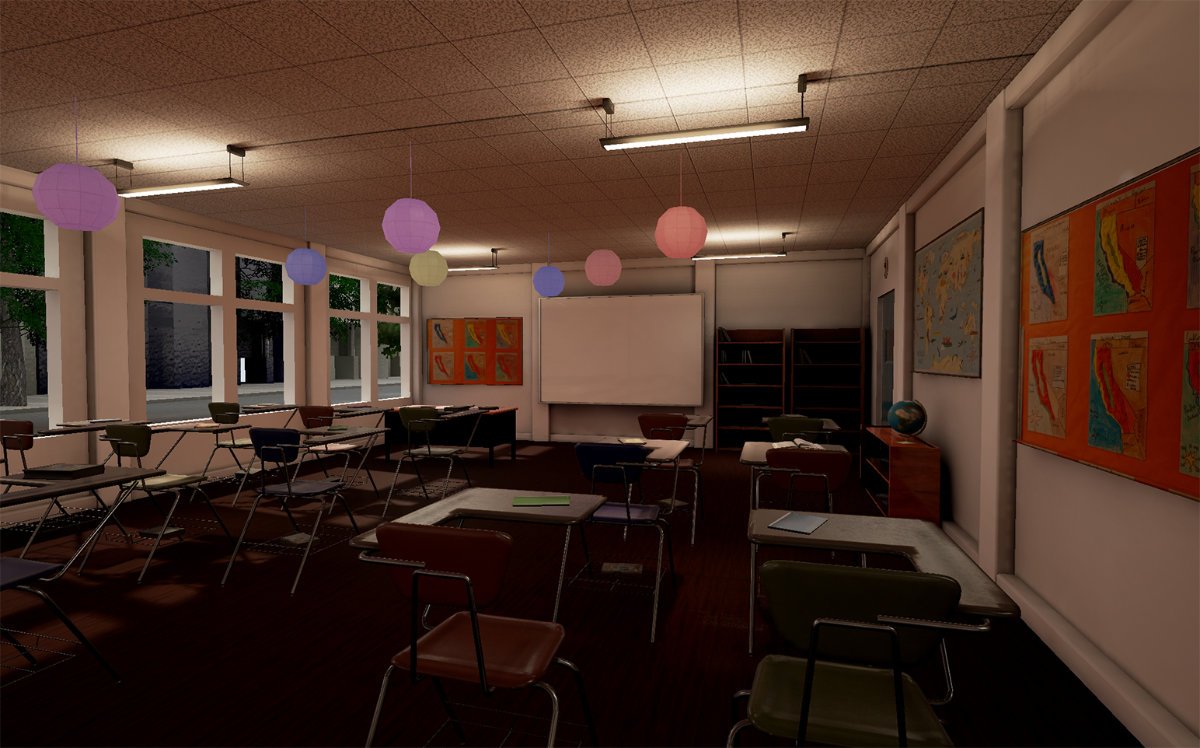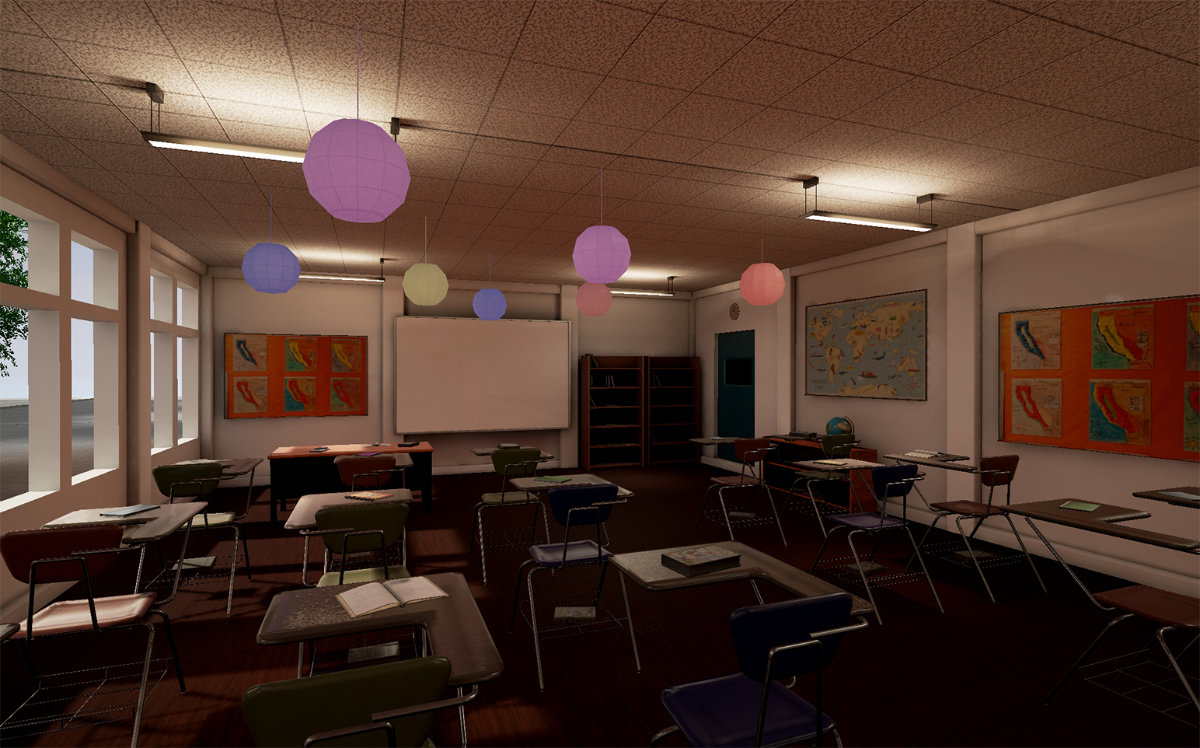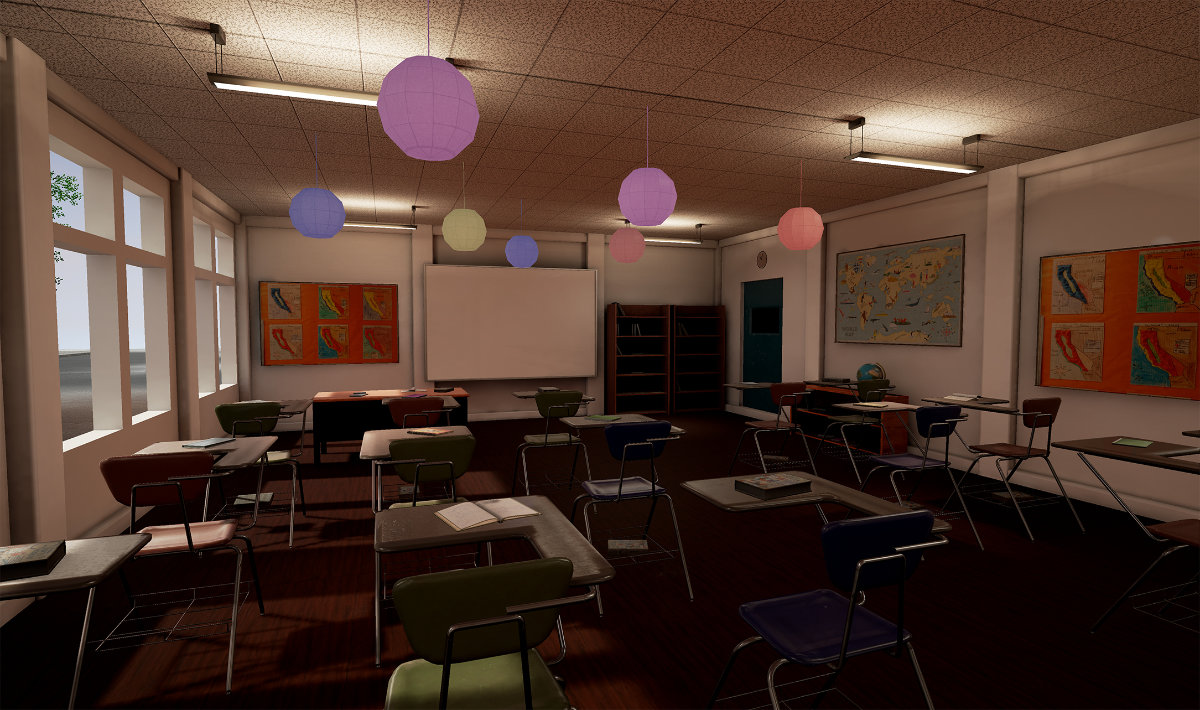VR Classroom
Worked with UC Davis Mind Institute to build 3D Assets for a Virtual Reality Classroom (targeting Samsung Gear VR headsets). The project was focused on studying, diagnosing and treating ADD and ADHD. I used a variety of tools to design, build and test the 3D environment, and ensured performant results on our target platform.

Project Details
Technologies
Categories
Links
Project Gallery



Project Details

Challenge
Samsung Gear VR headsets (using galaxy phones inserted into a headset mount) had very tight performance limitations, and very high frame rate requirements to ensure that users would not get disoriented or motion sick in the experience. We had to be very efficient in our texture and geometry budgets to meet these targets while maintaining a very high level of realism to engage and immerse the participants.
Solution
Using highly efficient modeling and texturing techniques used in video game development, we created bespoke highly efficient assets, materials in Unreal, and optimized asset delivery for our target platform. Good old-fashioned Low-Poly modeling, very efficient texture packing using texture atlases texturing techniques (combining multiple assets across fewer textures reduces the need for the system to load multiple separate texture assets).
Technology Used
- Autodesk 3ds Max
- Adobe Photoshop
- Quixel Suite of tools
- xNormal
- Unreal Engine 4
Results
The results were a highly performant, immersive classroom that ran within our frame rate target of 60fps minimum (usually hitting around 80-100 fps). Images of some of the views of the classroom are below: